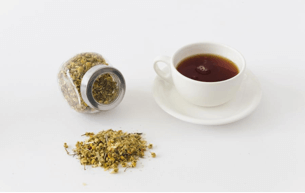March 2022
What is the science behind darker skin tones?

Our ethnic origins greatly influence the structure and appearance of our skin. When used in the context of skin, the term ethnicity also refers to the different environmental and cultural factors that impact on skin health and appearance. How we treat and care for our skin and the products that we use should reflect these differences. Our skin colour is determined by the density and the distribution of melanin.
Melanin is a group of molecules responsible for pigmentation of the skin. The more melanin skin has, the darker it appears. Eumelanin creates black and brown skin tones, while pheomelanin produces reddish brown tones, as seen in those with red hair and freckled skin.
4 Differences
Environmental Damage : Apart from influencing the colour of a person’s skin, melanin has antioxidant and skin-phot-protective properties against UV damage.
Ageing : Skin with a high percentage of melanin appears to show less signs of aging. In many studies, darker skin tones show firmer, smoother looking skin versus lighter skin tones. Research suggests this is due in part to less UV-induced photoaging.
Pore Size : People with darker skin generally tend to have larger pore size, which can coincide with higher oil production on the face. The good news? Oily skin often shows fewer signs of aging versus dry skin types.
Pigmentation & Hyper-pigmentation : While skin of all colours can suffer from pigment disorders, they are most common, more noticeable and more of a concern for individuals of Asian, Hispanic or African origin. Common inflammatory diseases such as Atopic Dermatitis or Acne, which manifest themselves as Erythema (a redness of skin caused by dilated capillaries) in white skin, can cause pigmentation changes in darker skins. Darker skins are also prone to post-inflammatory hyperpigmentation which is caused by an over production of melanin and appears as patches of darker skin colour. These patches often occur on skin that has suffered from Acne or Atopic Dermatitis.
Caring for Darker Skin
Cleansing
No matter your skin tone, choose products made for your skin type. If you tend to be more oily, using a natural facial cleanser or a cleansing oil with an oil moisturizer made to lend a balancing feel with lightweight moisture should help visibly improve acne breakouts. Your skin needs natural oils, so avoid soaps that leave skin with a "squeaky" feel. AMINA, Ritual Cleansing Oil is a lightweight, luxury cleansing oil that nourishes skin whilst removing make-up, dirt and sunscreen without stripping your skin but leaves it supple and glowing. It is scented sweetly with rose geranium and lemongrass oil for an uplifting feel.
Exfoliating
Skin with more melanin needs more care when exfoliating. Peels are risky and can result in more hyperpigmentation. That is because when the skin is traumatized it responds by producing more melanin to protect that area of skin. Overproduction of melanin can result in darker patches, even on already dark skin. This pigmentation is called post-inflammatory hyperpigmentation. It is very important to treat skin gently, which is why the nurturing, supportive nature of holistic skincare is a fantastic option.
A mask with active enzymes can be a great solution to decongest pores, gently exfoliate, and discourage breakouts. Enzymes help remove dead skin cells but are not as aggressive as acidic peels made from lactic or glycolic acid.
Hydration and Deep Moisture
Studies show that darker skin can suffer from a higher rate of Trans Epidermal Water Loss (TEWL) than white skin. Skincare that has ingredients to help manage hydration will help avoid both breakouts and the whitish cast that can result from dryness. When skin is dry the dead skin cells don't slough properly, causing hyperkeratinisation and opportunities for breakouts.
NERFERTITI, Radiance Botanical Serum is a hydration powerhouse combining over 30 botanical ingredients including Aloe Vera, Hyaluronic Acid and Hibiscus Flower Extracts.
Using a face oil after a serum locks in the moisture, try MAKEDA,, Radiance Botanical Oil bursting with over 20 rich African and British plant oils and extracts including Tamanu, Papaya, Kalahari Melon, Moringa and Borage.

Include a variety of different forms of content. Photographs and videos are particularly important because readers tend to be visual and want to see your product in action.


Get customer attention by clean visual and video
Make it easy to buy by eliminating stumbling blocks to purchase. Don’t assume customers know which item you’re talking about in your post. Provide a link directly to the product page or just link the product to your blog so they can buy if they want. If it relevant give readers more than one way to get to the product.
Article credit : Heidi Cohen ( https://heidicohen.com/use-blog-to-sell/ )
